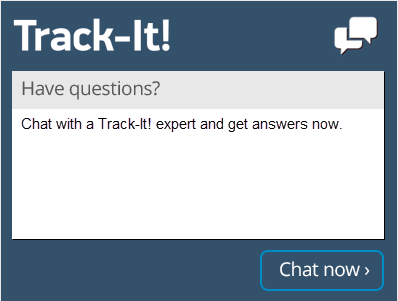As a new IT manager, you may find your self looking for inspiration on how to start a world class help desk. Creating a world class help desk is no easy task but there are some key considerations that will help you get there.
Technology is rapidly evolving and companies rely on a delicate balance and wide variety of software and hardware equipment that functions seamlessly together. A top notch IT help desk that can adequately provide the support the business requires is critical to their success.
IT help desks are responsible for much more than making sure the internet is up or that printers are functioning. All IT help desk employees need to have a variety of skills and knowledge to provide both supportive and proactive assistance to their users.
Without a world-class IT help desk, staffed with top-notch team members, businesses may find that they’re losing a lot of time and money to IT issues. Without uninterrupted internet, email, cloud servers, and other technology, it can be difficult to keep the business operating effectively.
Both software and hardware play a role in determining what kind of help desk skills are necessary. Larger scale operations and those businesses which focus on technology, will require more support. It is often difficult to pinpoint precisely which specific skills will be needed when putting together a help desk function but one thing is certain: a successful IT help desk team will have employees who are familiar with a wide range of operating systems, hardware, and software as well as a robust help desk ticketing system to tie it all together.
Now that you have an understanding of what an IT help desk needs to have, it’s time to consider which systems are necessary for running such an operation.
Use a web based ticketing system
End-users who are already a part of the internal system do not always want to call to put in a help desk ticket. Using a web based ticketing system will help keep these end-users satisfied and ensure that tickets are entered into the system and resolved efficiently. A web based ticketing system can also make it much easier to track and log issues.
Web based ticketing systems can help streamline the ticketing process and prioritize internal end-users, especially remote users. Some of these systems even allow end-users to send an email to a specified address. The system then converts that email into a ticket, so the user does not need to use any other application or even log in to the help desk web portal.
For those who are more knowledgeable, the help desk should also offer a self-service portal. This portal can allow end-users to create tickets, view the status of open tickets and review previously closed tickets in the system. Self-service portals typically provide a searchable knowledge base to help users find documents for solutions for additional help.
Set Up a Knowledge Base and a Self-Service Center
These days, it is common for users to have more technical skills. Setting up an online knowledge base specific to your company, will help reduce some of the help desk’s workload by allowing users to handle basic problems themselves. Help desk self service portals that offer proactive solutions show their users that not every problem requires a ticket to resolve.
In the same vein, there can be an overabundance of self-service. This is especially true when technology creates a divide between human interaction. IT firms need to find a balance between customer interaction and self-service. Forcing users to only submit tickets via a self-service portal may cause users to have a negative view of the help desk. It is sometimes helpful to allow multiple submission options for users to submit tickets. Usually some combination of phone support, email ticket submission and self service ticket submission is ideal. It is also important for help desk teams to proactively monitor inbound requests and try to get in front of recurring problems to resolve them before they affect a large number of users.
Some common issues can be resolved by implementing new technology, such as a more secure and updated password management tool that will prevent users from continually forgetting their passwords. Or having a very clearing documented password reset process. These solutions may seem simple, but they can greatly reduce the number of common requests the help desk receives on a regular basis.
Other issues that occur less often could be resolved by creating knowledge base articles that feature tutorials or even short training videos that outline standard solutions. If problems are escalated to the service desk, the team will know it is something that needs their attention. By providing a self-service portal that includes a knowledge base in addition to ticketing options, users who feel comfortable troubleshooting basic issues will have access to the information they need to handle small, common problems. This can save your IT staff time and ultimately save money for your entire IT department.
Utilize Remote Assistance Options
Not all problems can be solved through proactive solutions alone. Some issues still require the use of support tickets. Setting up a quality remote assistance system is an essential part of the modern help desk. This tool allows a member of the help desk team to connect to the user’s computer remotely, enabling them to solve issues without being physically present. This can save both time and money in the long run.
Remember to review the remote options carefully to ensure that your operation is using highly secure software. There have been a few instances of unsecured remote systems being used to steal or pilfer company data.
Implement a Ticket Prioritization System
Regardless of how many staff members you have, all IT help desks require a prioritization system to make sure that tickets are organized according to their overall impact on the organization and their immediate need for resolution. Having a prioritization policy and process is an important way of ensuring that every team member is on the same page regarding which issues take precedence. This also helps users understand why certain issues may take longer to address. Automating the prioritization and routing of tickets also ensures that tickets are routed and treated in a consistent manner according to your policies.
Make Use of Analytics and Reporting Services
Help desks should have an easy and dependable reporting and analytics system that they can use to show their effectiveness and to improve their own processes. Using a reporting system is one of the most effective ways to track both response and resolution times.
It is also important that IT help desk processes be documented. It is impossible to deliver a world-class service if the methods aren’t precise, consistent, and capable of being scaled up or down as needed. Without detailed documents, implementing improvements is also more difficult. Every process should have the end-user needs in mind and be regularly evaluated to determine if anything needs to be adjusted.
Gather User Feedback
In addition to reporting services, a successful help desk needs a way of gathering feedback from users. Generating and analyzing feedback is one of the most effective ways to not only monitor overall performance but also to implement continuous improvements.
To deliver world-class services, an organization must learn and adapt from end-user feedback. One way for an IT help desk to improve is to understand where they are falling short with users. Without feedback and other quality assurance processes, that can be very difficult. Adapting processes based on feedback will ensure that end-user needs are being met more efficiently.
Communicate Effectively
Users must be able to open tickets and access updated information quickly and easily. Communication should flow freely from the help desk to the end-user in the form of email communications when tickets change status, when major updates occur, when the assigned help desk technician changes or when the technician needs more information. General help desk communications can also take the form of an internal blog, email newsletter, or column in the business’s regular company news publication if such a thing is available. This is especially important for those users who are driven to use the latest technology or are implementing new technology on a regular basis.
Continue to Grow Over Time
To run an effective IT help desk, adequate tech and human resources are required. Organizations with a small help desk and growing demands often turn to outsourcing as an effective way to deliver quality service, while others choose to work to increase the size of their internal team.
Regardless of which choice you make, one crucial issue to keep in mind is the fact that creating a world-class help desk is critical to the success of your business. Organizations must develop multi-tiered systems to monitor and track any inbound contacts. A high quality help desk ticketing system is required to keep work prioritized, routed and managed properly. It is also crucial to hire experienced staff with the necessary skills required to service the software and systems you require. Managers should also ensure that their organization is updating its own technology regularly and not relying too much on an overabundance of legacy systems. These older systems tend to slow down productivity and reduce efficiency.
With the right pieces in place, a world-class IT help desk will help to alleviate stress, improve service levels and increase IT staff and end user job satisfaction. A proper help desk can help to drive the growth of a company and move an organization forward.





